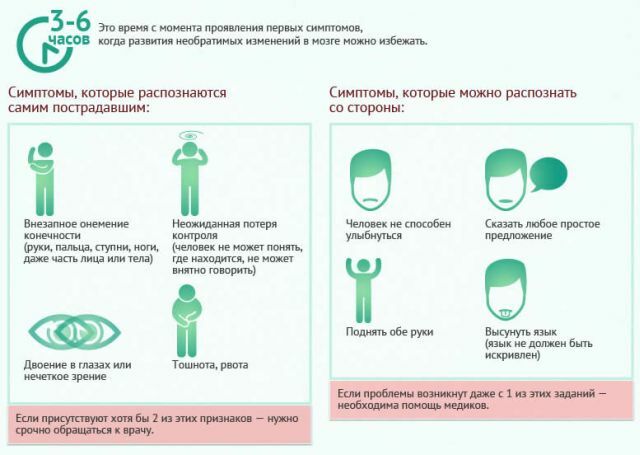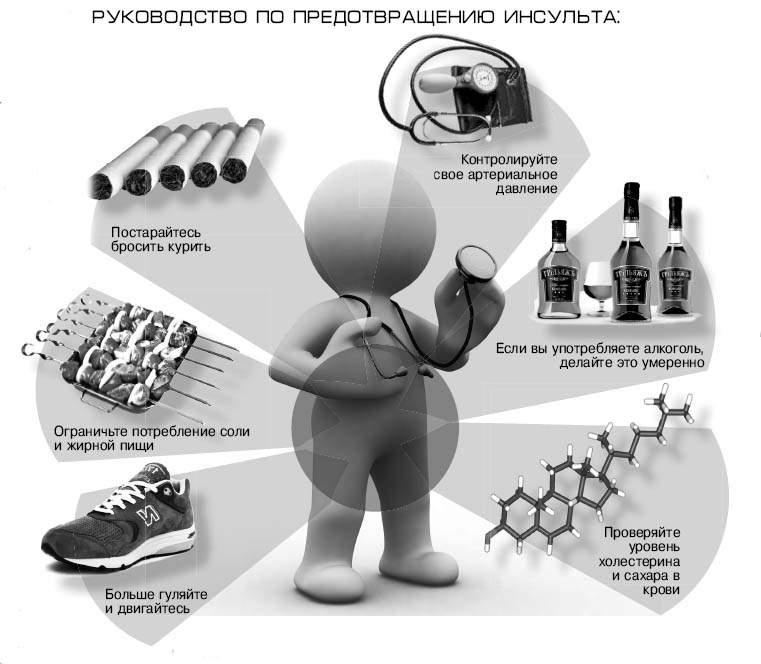Low stroke is important for determining the degree of severity of the pathological process. This indicator helps to identify bleeding and time to prevent swelling of the brain tissue. Hyperthermia and increase in blood pressure appear as compensatory reactions of the organism on the development of ischemia. The rate of blood flow in the vessels increases with the aim to deliver the neurons of oxygen and nutrients, but In severe violations of cerebral circulation such protective reaction can only worsen the overall condition.

normal levels
Body temperature indicators reflect the condition of the body during a stroke attack. In clinical trials, the following pattern was detected: the higher the temperature readings, the higher the risk of hemorrhage. The temperature after the ischemic form of stroke is slightly reduced, but corresponds to the normal range. Indicators may be reduced to + 36 ° C, which is caused by the change of blood circulation in the body. With this mark increasing the chances for a quick recovery without complications. The critical limit of normal value is considered + 37,5 ° C.
Many people are interested in what happens when the temperature of hemorrhagic stroke, characterized by cerebral artery rupture, followed by bleeding in the brain. Hyperthermia in which the thermometer mark lying above the permissible boundaries + 37,5 ° C, indicative of severe damage to the central nervous system. In such a situation with an increase in performance increases the likelihood of developing complications, coma and death.

Increasing the temperature characteristics may result in necrosis, inflammation, new thrombogenesis and reuse of cerebral circulation.
Why fever
If the temperature rises after a stroke, the symptoms of cause indicates complications. When hyperthermia may be: extensive bleeding in the brain, atypical anaphylactic or allergic reaction to medication, or defeat infectious viral disease. The most dangerous etiology improving temperature characteristics is considered cerebral artery thrombosis, cerebral edema and cerebral vessel rupture with subsequent hemorrhage.
Depending on the cause of the hyperthermia treatment of the patient is prescribed medicine:
- suspected brain tissue edema prescribe diuretics;
- development of infectious and inflammatory processes inhibit antibiotics.

In the post-stroke period of high temperatures accelerates the intracellular metabolism in response to progressive cerebral ischemia. The body tries to restore the power of neurons, increasing the heart rate. The result is increased blood flow velocity, the temperature begins to rise. But in acute disorders of cerebral tissue blood circulation are not saturated with nutrients and oxygen, hypoxia.
If untreated, the temperature rise on the background developing tissue necrosis extends inflammation, ischemia area continues to expand. Hyperthermia worsens the condition, causing the occurrence of complications and to whom.
In clinical studies, doctors have documented that if severe stroke the temperature rose 4-6 hours after stroke. In the pathology of moderate severity time period increased to 10-12 hours and reached a level of 38 +... + 40 ° C. Against the background of minor strokes or ischemic stroke, is not accompanied by rupture of the vessel, does not increase the temperature.
What to do
Heat stroke with moderate to severe disease severity is a protective response of the body, designed to compensate for inadequate blood supply to the brain tissues. But in hemorrhagic stroke, when a cerebral vessel ruptures and bleeding begins, the high temperature It increases the risk of cerebral edema, irreversible brain damage, total loss of cognitive or motor functions.
To prevent negative consequences, doctors inject a patient antipyretic drugs. At the same time a means to reduce the body temperature is not always allowed to use, because they relate to the group of nonsteroidal anti-inflammatory drugs. Upon reaching the therapeutic effect of the last blood thickens, which increases the degree of bleeding on a background of hemorrhagic stroke. In the pathology of coronary form increases the likelihood of vessel rupture.

If the temperature increases in stroke, the doctor evaluates the current condition of the patient and acts depending on the temperature characteristics:
- Increased adult patient temperature to + 37,5 ° C refers to normal values.
- If the figures are beginning to fall in ischemic form of stroke, it testifies to the positive dynamics of treatment and increasing the chances of recovery.
- In case of excess in the boundary + 37,5 ° C increases the risk of re-occurrence of the ischemic attack and complications.
Drug therapy with hyperthermia of the central nervous system inefficient. Most of the drugs even when the development of the inflammation can not only overcome the blood-brain barrier. In this situation, use such methods for reducing temperature:
- Invasive method. During the procedure the patient is injected intravenously cooled saline for adjusting the values of temperature characteristics. In this case, there is a risk of adverse reactions: the emergence of infectious diseases, new thrombosis, internal bleeding.
- A non-invasive method. During thereof exposed skin. In this head obkladyvaetsya ice packs or a special device is used having the shape of a helmet.
Temperature Indicators help in time to determine the severity of the pathology. Hyperthermia may be a consequence of damage to the thermoregulatory center. Therefore, the victim is forbidden to give antibiotics, analgesics and steroidal agents. Heat help knock 2 tablets of nonsteroidal antiinflammatory drugs (Analgin, Paracetamol). Exceed the dosage is not recommended, as it may harm the patient. After taking the medicine, the patient should be protected and kept warm until arrival of an ambulance.



